Notorious killers and criminals who have turned their hand to art
Some of Australia’s most notorious crooks and the world’s worst killers have spent time in prison expressing their tortured thoughts in paintings. These are the artworks of some of the world's most twisted minds.
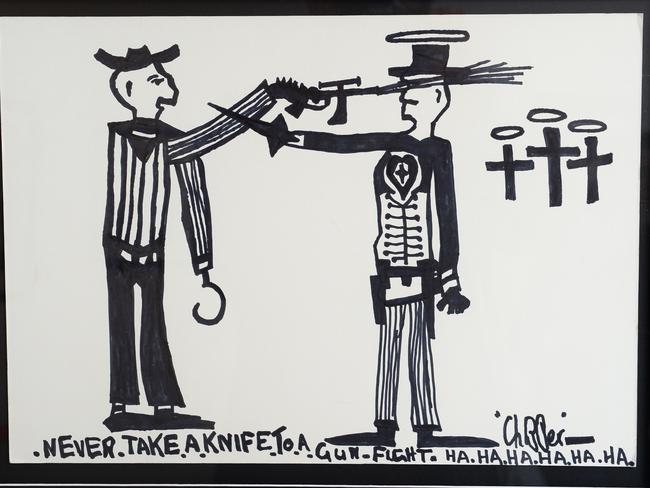
True Crime
Don't miss out on the headlines from True Crime. Followed categories will be added to My News.
Beauty may be in the eye of the beholder, as the old saying goes, but in these artistic cases it’s in the eye of the offender.
Many convicted criminals, either inside jail or out, have swapped their aggression and weapons for pencils and paintbrushes.
Killers, bandits and other evil types have turned to artwork as a form of therapy.
For some it proves a way to blot out their demons.
For others it’s a way of encouraging positive thought and carving a path of rehabilitation, with some even making big dollars through exhibitions and internet sales.
The Firm’s artistic sideline
In the 1950s and ‘60s, British twin brothers Ronnie and Reggie Kray were gangsters who ruled London through organised crime rackets and killings.
Officially they worked as nightclub owners.
Unofficially, through their gang “The Firm”, they perpetrated armed robberies, arson attacks, protection rackets and assaults.
Thanks to their boxing background the twins were notorious for violence.
But their was a flip side to their brutality.
The brothers were talented artists in mediums including chalk, watercolour, oil paint, charcoal, pastels and pencils.
While in prison they painted everything from nudes, portraits, landscapes, seascapes, animals and still-lifes — mostly copying off pictures from magazines and books.
Some of their works were sold at auction.
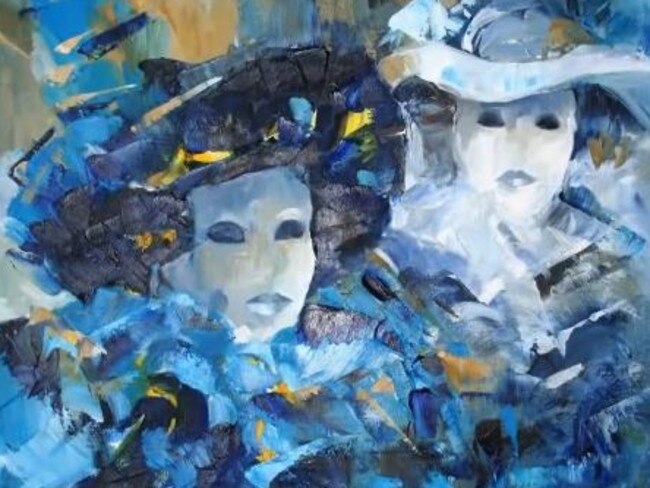
Cult killer’s evil creations
US cult leader and murder mastermind Charles Manson has revealed the inner workings of his twisted mind via many forms of artwork he’s produced in jail.
While acting as forefather of a new social order in the late 1960s, Manson led a “family” of followers who, on his orders, murdered pregnant US actress Sharon Tate and six others over two nights.
The victims met vicious deaths.
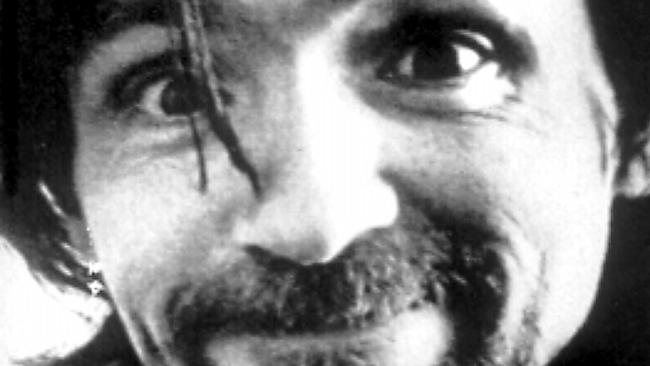
Manson’s mantra was “Helter Skelter”, as he wanted to spark a race war, and he remains a worldwide recognised symbol of evil.
Artistically speaking, Manson has written songs and turned to painting and crafting.
His chaotic designs are warped, some containing sexual imagery.
He has a preoccupation with scorpions and spiders.
Inner demons come to life on canvas
AMERICAN serial killers Henry Lee Lucas and Ottis O’Toole were a diabolical combination.
A sex victim and pyromaniac subjected to satanic rituals as a child, Ottis Elwood Toole became an American drifter who was convicted of six counts of murder, after confessing to many more.
It was in 1976 when he met ostracised sociopath Henry Lee Lucas at a soup kitchen.
The two became lovers and, according to their later confessions, killed men and women and a young boy in a variety of ways.
Lucas, who liked to talk to police who gave him preferential treatment, confessed to hundreds of murders across 27 US states.
He was convicted of 10 killings.
Both men died in jail, but not before spilling their inner demons onto paper and canvas.
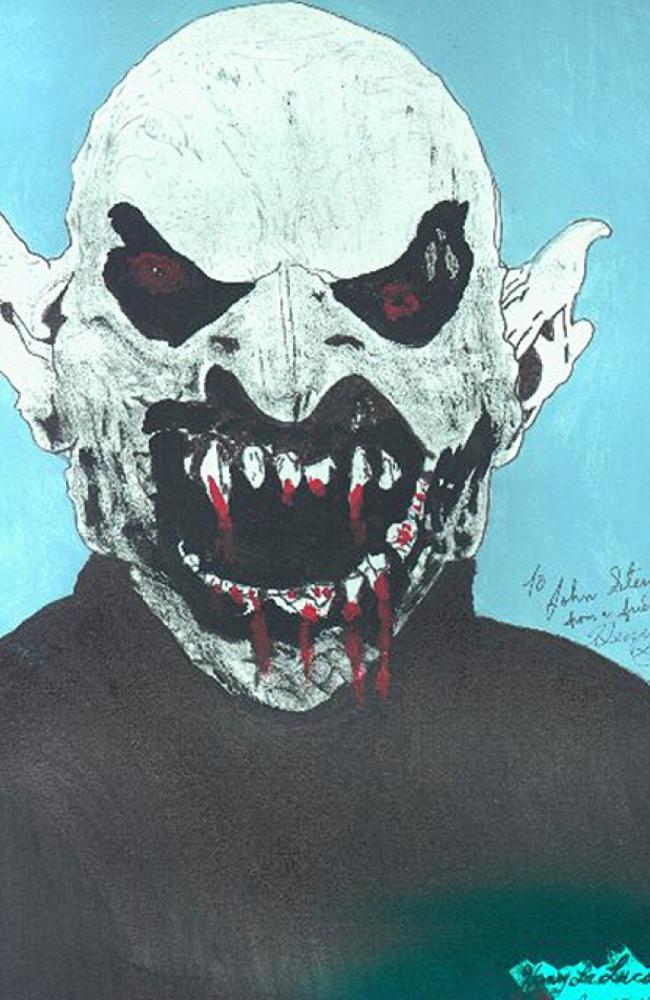
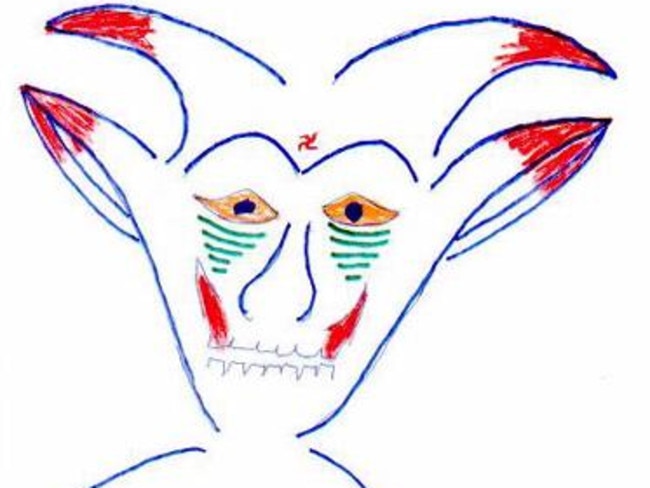
Killer clown’s disturbing pictures
John Wayne Gacy, one of the world’s most infamous serial killers, dressed up as a clown while performing at children’s events and parties.
Gacy raped and killed 33 boys and young men over a six-year period in the 1970s.
He was a callous creep.

And his paintings were just as creepy.
Sickening, even.
Not surprisingly, his favourite subject matter was clowns.
He even painted a self portrait entitled “Goodbye Pogos”.
Gacy was dubbed “The Killer Clown” because his costumed party character was named “Pogo the Clown”.
While awaiting execution, he began painting.
After his execution in 1994, his lawyer auctioned off his works.
The critics spoke by destroying a lot of them in a bonfire attended by several hundred people, including relatives of some of Gacy’s victims.
Gacy’s haunting paintings are said to have since generated controversy in galleries across the United States.
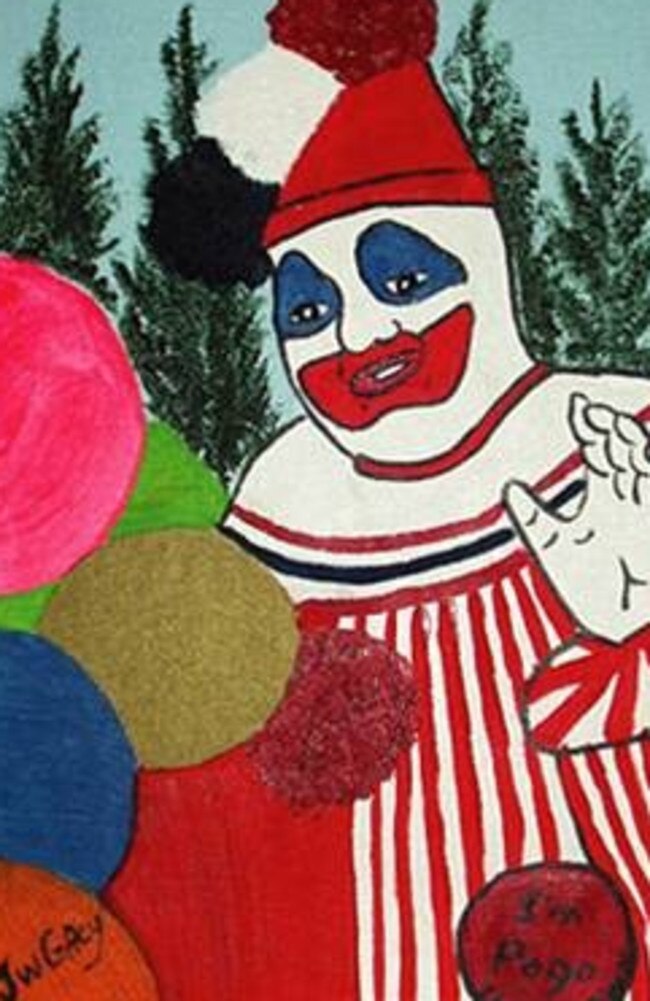
Chopper a colourful character on and off canvas
Here in Australia, the late Mark “Chopper” Read was a colourful and violent chap who, like Vincent van Gogh before him, had a penchant for cutting his ears off.
In the early 2000s, after a long criminal career, Read took up abstract painting.
His favourite subject was Ned Kelly.
In his first public exhibition in 2003 at a Fitzroy gallery, Read displayed 26 pieces with price tags ranging from $1200 to $4800.
He sold all but two pieces, earning himself more than $40,000.
Read painted in his Collingwood backyard, using the roof of his hound Kaiser’s kennel as his easel.

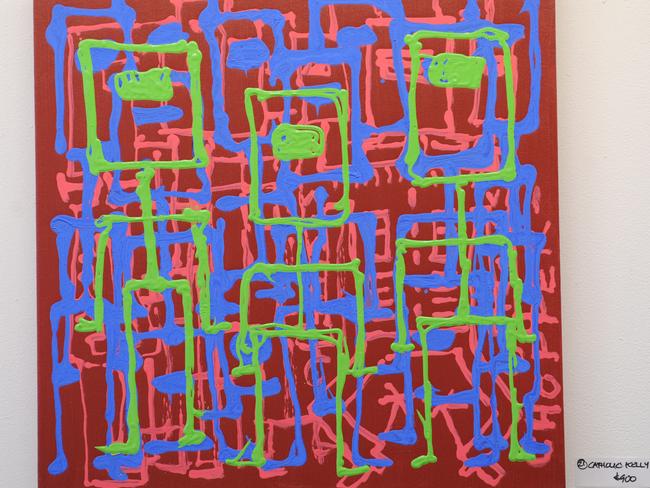
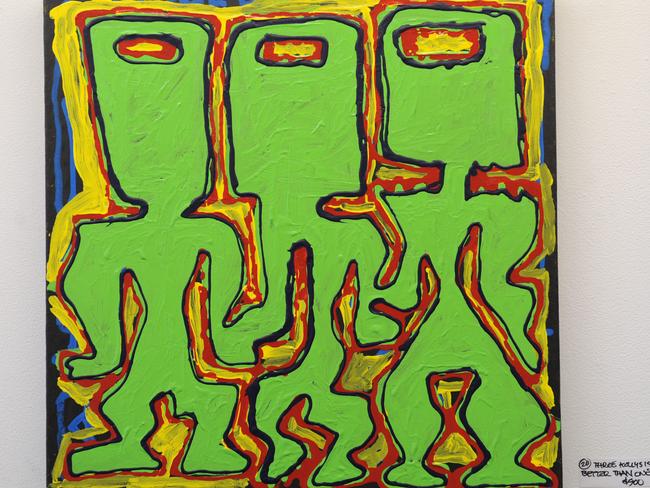
In 2003, the State Library came under fire for buying a Read self-portrait.
The library bought the painting, called Tast Ful Old Criminal, for $1450.
The library defended the purchase, saying the piece had artistic merit.
“The painting is very interesting, whether or not you consider it a great piece of art,’’ library director of collections and services Shane Carmody said at the time.
“He (Read) is an interesting character in the state’s history. Not a hero, but an interesting character.”
Read said of his works: “They all have colourful characters in them.’’
Read held several exhibitions and sold many works before he died of liver cancer in 2013.
“They’ll be a bloody good investment for lucky punters in years to come,’’ Read said of his paintings.
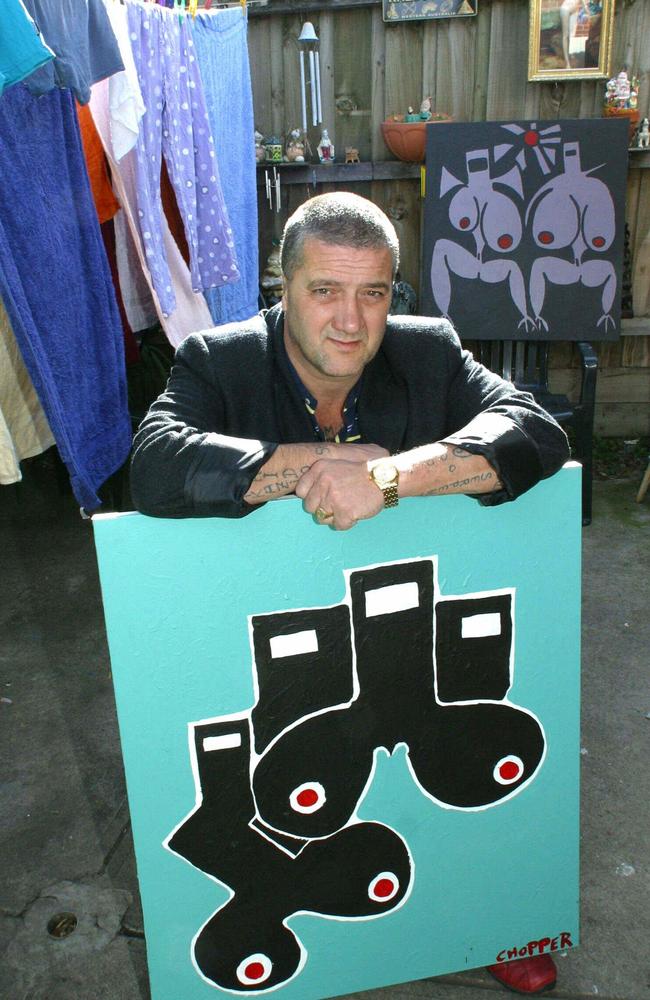
Bandit found peace with the brush
Doug Morgan was one half of the notorious “After Dark Bandits” duo who served time with Chopper Read in Pentridge Prison.
He and his identical twin brother, Peter, robbed 24 banks and TAB agencies across Victoria in the late 1970s.
Morgan, too, found solace in painting.
Like Read, he liked Ned Kelly themes.
While Morgan did time with Read, he did not see eye to eye with Chopper when it came to art.
“I think most of his art is criminal, although I do see his work as art — in the Andy Warhol style,” a reformed Doug Morgan told the Herald Sun in 2003.
“It’s his interpretation of something.”

Having offered to donate his Kelly work to the State Library, Morgan called on Read to return the $1450 cheque the library handed Read for his purchased painting.
“I think Mr Read should do the right thing and not accept taxpayers’ money, considering we both lived off the government for many years while institutionalised,’’ Morgan said.
“Chopper should do the gentlemanly thing. It’s all right to sell his work to the public, but he should donate it to the library and give something back to society.”
Morgan studied HSC art in Pentridge while serving an 11-year sentence.
In 2011, Morgan turned tutor to teach art to Black Saturday bushfire victims.
One of his works, Beach Boxes, was included as part of a Federation Square exhibition to help mark the second anniversary of the bushfire tragedy.

The Postcard Bandit’s other talent
Another notorious bandit who spends much of his time painting is Brenden “The Postcard Bandit” Abbott.
Currently incarcerated in Queensland on a 25-year stretch, Abbott has a lot of spare time on his hands and plenty of blank canvas to fill.
Abbott’s infamous crime spree began when he escaped from Western Australia’s Fremantle Prison in 1989, two years into a 14-year sentence for armed robbery.
After six years on the run, he was recaptured on the Gold Coast and sentenced to another 12 years’ jail for bank raids in Queensland.


But in 1997 he escaped from Brisbane’s maximum security Sir David Longland jail with four other prisoners.
He was eventually recaptured in the Northern Territory.
Abbott paints mainly portraits.
His subjects have included boxer Mike Tyson, athlete Cathy Freeman, cricketer Mark Waugh and rugby league great Alfie Langer.
He once painted his lawyer Chris Nyst for Australia’s leading portraiture award, the Archibald Prize.
Abbott has sold some of his work, and donated the earnings to charity.
In 2005, copies of his Mike Tyson painting were auctioned on the internet.
The move outraged politicians and victims of crime advocates.

Experts studied Granny Killer’s work for clues to crazed mind
Known as “The Granny Killer”, John Wayne Glover was sentenced to six life sentences for the vicious and brutal murders of six elderly women in Sydney’s affluent north-shore suburbs between 1989 and 1990.
Glover either bashed his victims with a hammer, slammed their heads into brick walls or strangled them with their own pantyhose.
The attacks happened in laneways, alcoves and retirement homes.
During his time in jail before he hung himself in his cell in 2005, Glover channelled his thoughts toward drawing
His works were displayed in an inmates’ craft store next to the Lithgow Correctional Centre, and sold for $25 a piece.
His works included mainly landscapes, based on photographs.
Glover’s work was said to be popular, in particular to psychologists keen to understand killers’ minds.
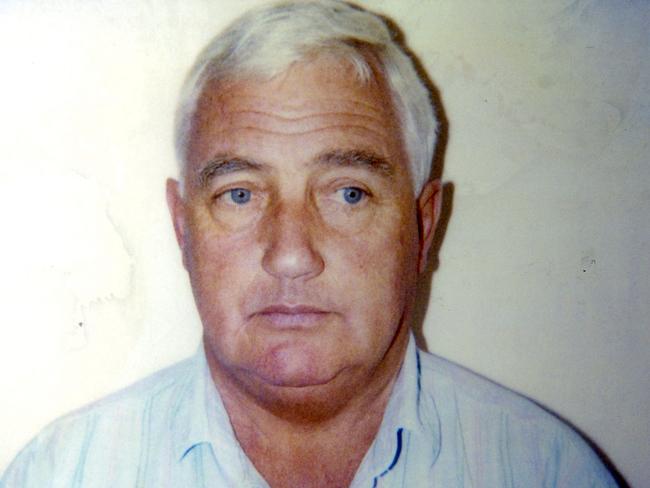
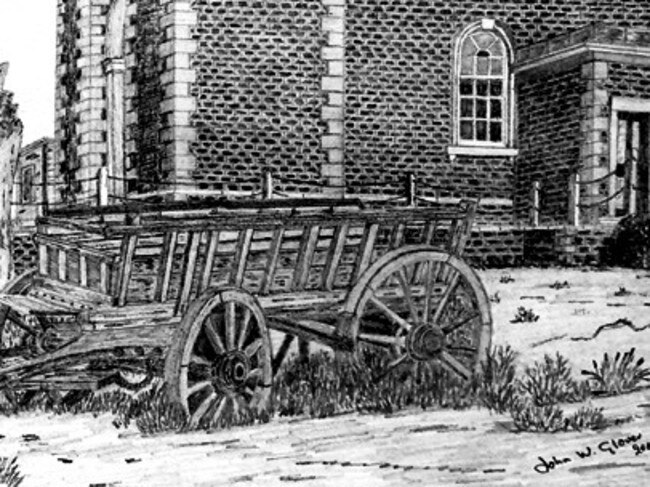
The 1986 murder of young Sydney nurse Anita Cobby shocked Australia.
Cobby was dragged into a car and beaten, tortured and repeatedly raped for around two hours before her throat was cut and her body dumped in a paddock.
John Travers, one of the young men involved in the depraved murder, was jailed for life after he pleaded guilty.
In jail, he liked to make leatherwork images.


Executed Bali Nine member’s artistic legacy
Before he was shot by firing squad in 2015 for drug smuggling, Bali Nine ringleader Myuran Sukumaran became a devoted painter inside Kerobokan Jail in Bali.
On death row in Indonesia since 2005, Sukumaran and fellow Australian heroin smuggler Andrew Chan lodged clemency pleas with the president in 2012.
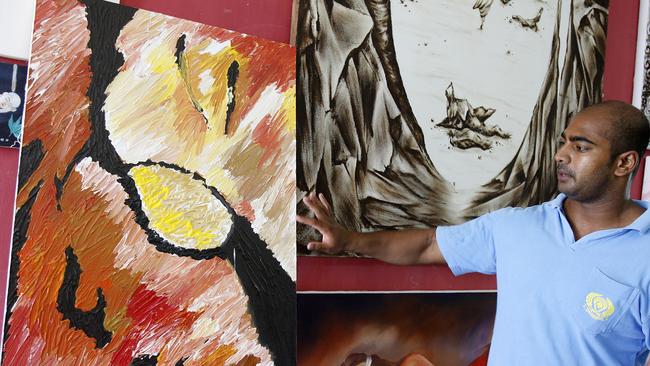
While serving time, Sukumaran and Chan ran rehabilitation programs, including an art studio where inmates took classes.
Australian artist Ben Quilty mentored Sukumaran.

Sukumaran painted portraits of the Indonesian politicians who will decide his fate, and a host of Australian politicians including Tony Abbott, Kevin Rudd, Julia Gillard and Julie Bishop.
He attempted to enter the Archibald Prize twice, once with a self portrait.
Photographs of his paintings were included in his unsuccessful judicial review application.


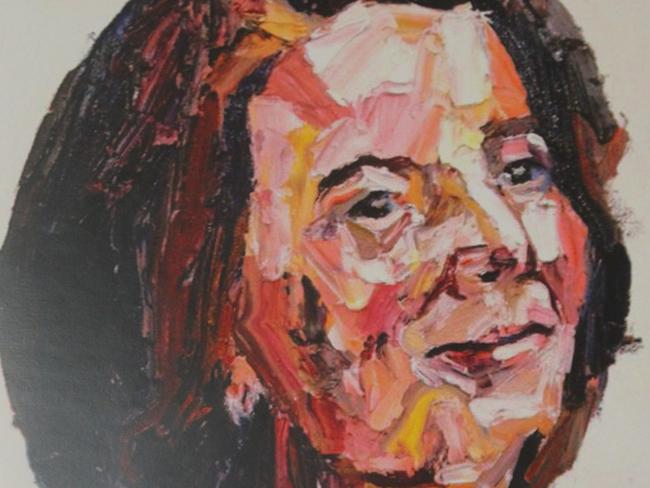
One of the inmates Sukumaran helped set straight was Dayu Alit, a young woman sentenced to four years and three months’ jail in Kerobokan prison for possessing a small amount of methamphetamine.

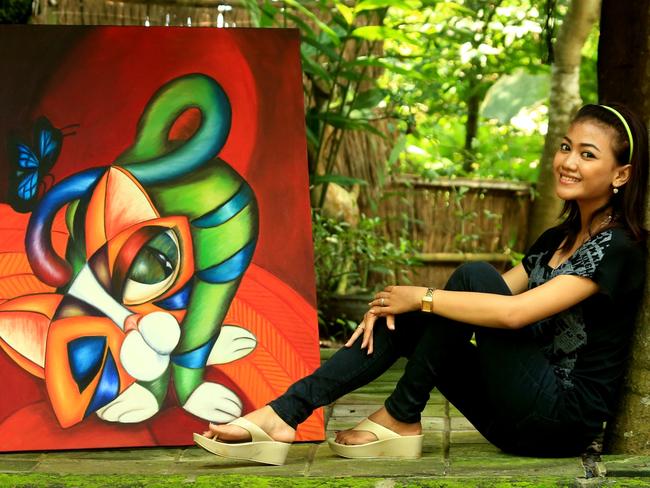
Alit took up painting in the jail studio and created some striking pieces.
Released on parole after three years, Alit returned to finish senior high school and become an artist.
MORE CRIME READS
JOHN WAYNE GACY THE ORIGINAL KILLER CLOWN
HOW MATE SURVIVED LEWIS MORAN EXECUTION
'THE ICEMAN' ADMITTED TO MORE THAN 100 MURDERS
Originally published as Notorious killers and criminals who have turned their hand to art




